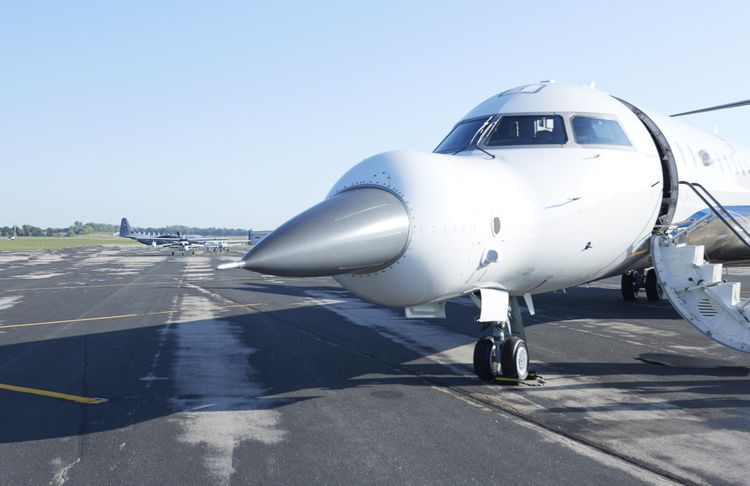The F-16’s new electronic warfare suite, the AN/ALQ-257, has begun flight testing after successfully completing ground tests in an anechoic chamber, Northrop Grumman reported.
The Integrated Viper Electronic Warfare Suite, or IVEWS, mounted in a Block 50 F-16, completed an Air Force evaluation in the Joint Preflight Integration of Munitions and Electronic Sensors (J-Prime) facility—an anechoic chamber—last month, Northrop said. That same aircraft has been conducting flight tests for about two weeks, and will soon be joined by a second F-16, a company official said. Northrop is not yet cleared to reveal the location of testing.
Flight testing to validate what was learned in the chamber will take just a few weeks, and an operational assessment will be completed “by the fourth quarter of this year,” said James Conroy, vice president of navigation, targeting, and survivability, in an interview with Air & Space Forces Magazine. Developmental and operational testing should be completed in early 2025, and based on the results, the Air Force will decide future milestones such as when production and deliveries can begin and when the first F-16 unit is expected to be declared operational, he said.
“We’re going fast,” Conroy said, because the Air Force’s F-16s “don’t have this kind of survivability equipment” and need it to be operationally relevant. The system is an all-digital jammer that has been extensively tested to cooperate with and deconflict with the F-16’s new AN/APG-83 Scalable Agile Beam Radar (SABR), an active electronically-scanned array (AESA) radar. The two systems can be used simultaneously, Conroy said. Both are made by Northrop.
The electronic warfare system is capable of detecting, identifying and countering “the most advanced threats” on the battlefield today, Conroy said, and can perform accurate geo-location of emitters with just a single aircraft. The simulations in the chamber were “intense,” he said.
The IVEWS will be internal to the F-16 and will replace the centerline-mounted AN/ALQ-131 self-defense jamming pod, freeing one external station on the fighter for a fuel tank or weapon. The system will use antennas located elsewhere on the fuselage; the outer mold line of the aircraft hasn’t been altered, Conroy said.
He declined to characterize whether the IVEWS is comparable to the Eagle Passive/Active Warning Survivability System (EPAWSS) being mounted on F-15Es and F-15EXs, saying only that that they are “both advanced electronic warfare systems” and can work together.
The IVEWS is intended to provide the F-16 with electronic warfare capabilities “on a par with fifth-generation aircraft, significantly enhancing survivability for operations in contested and congested electromagnetic spectrum environments,” Northrop said. “Its ultra-wideband suite can detect, identify, and counter advanced radio frequency threats, including millimeter wave systems.”
The IVEWS started out as a Middle-Tier Acquisition program to achieve rapidly fielding; it became an Air Force program of record in 2019.
Conroy said the system will be especially helpful in coping with mobile anti-aircraft radars and missiles whose position is unknown at the start of a mission and which may turn on and fire on F-16s when directly overhead or nearby.
To reach this point, the IVEWS has undergone three years of testing, both on the ground and in the air aboard Northrop’s Bombardier CRJ, acting as a surrogate for the F-16 in the Northern Lightning 2021 exercise, Conroy said. It has also been tested at Hill Air Force Base’s F-16 Block 50 avionics system integration laboratory.
In the chamber, the IVEWS was “subjected to accurate representations of complex radio frequency spectrum threats,” Northrop said in a press release. It demonstrated “the ability to detect, identify, and counter advanced radio frequency threats while operating safely with other F-16 systems.”
Conroy said the system could permit the F-16 to remain credible into the 2040s, and is being evaluated by a number of F-16 user countries, particularly those buying the F-16 Block 70. Turkey has signed a letter of agreement selecting the IVEWS for its Block 70s.
